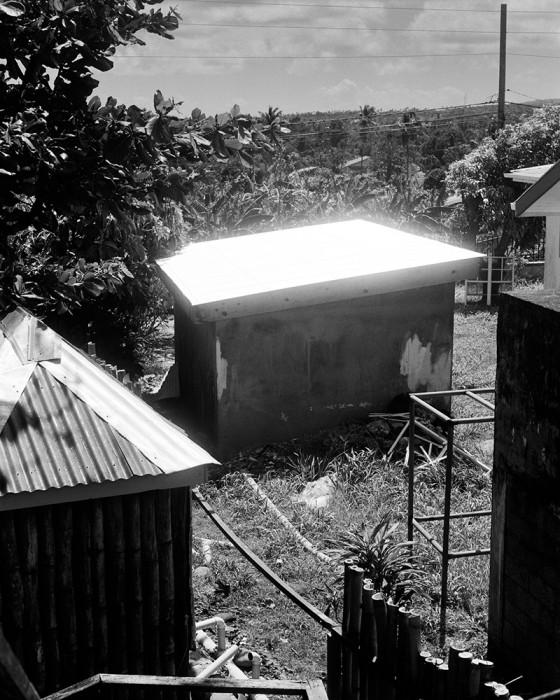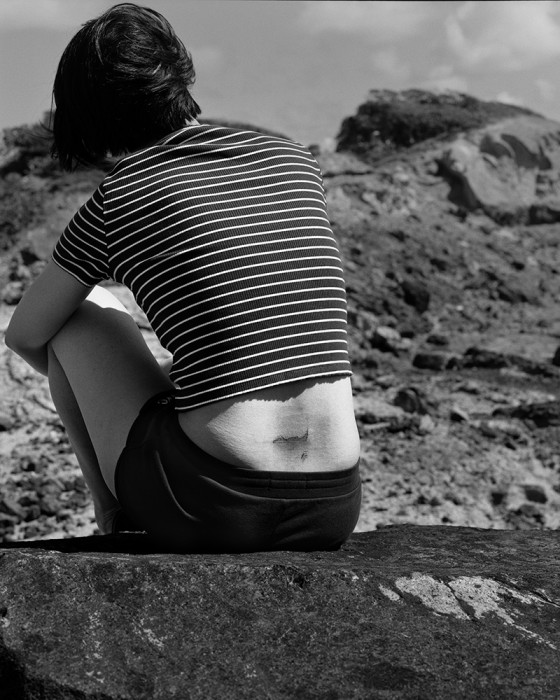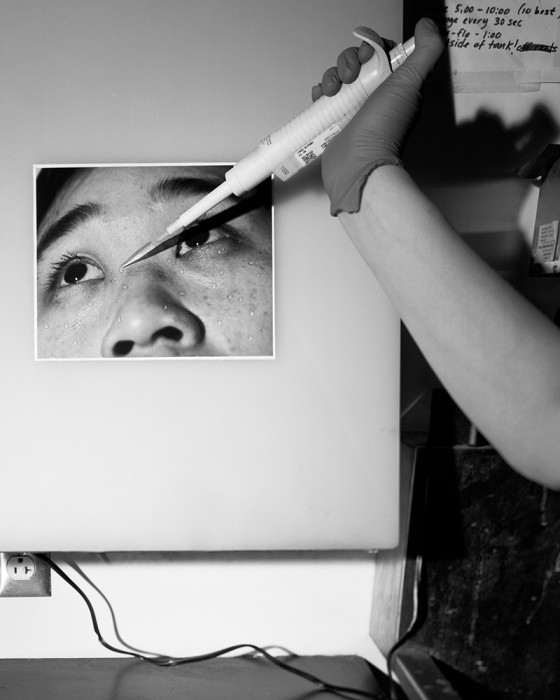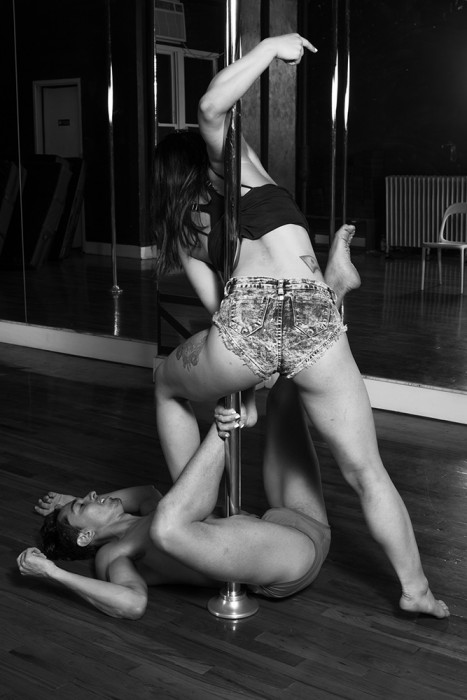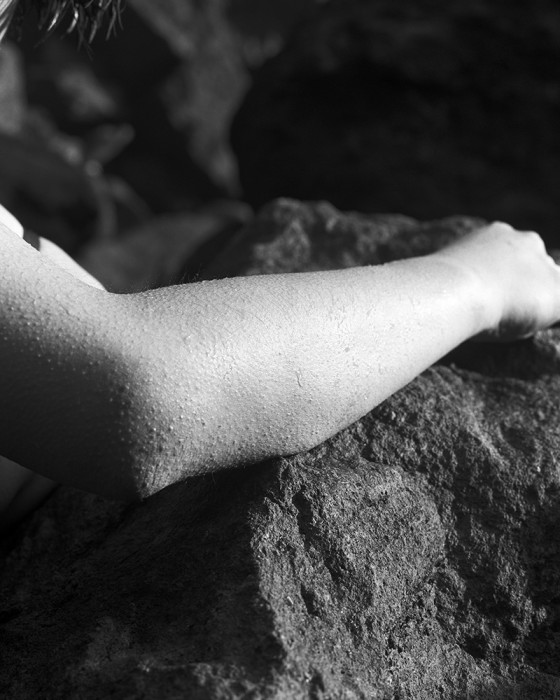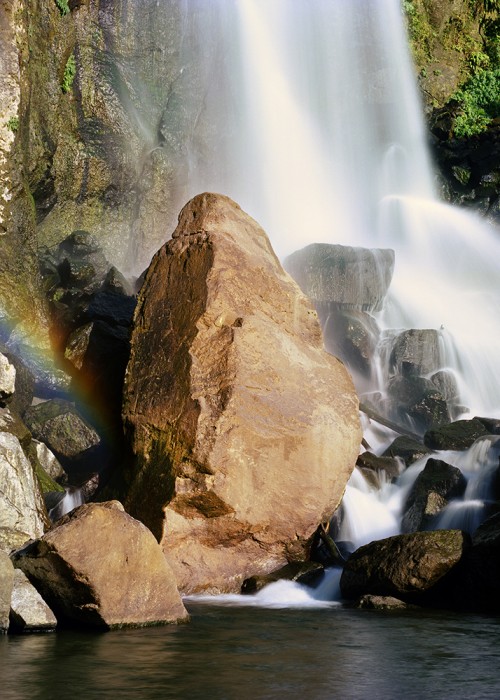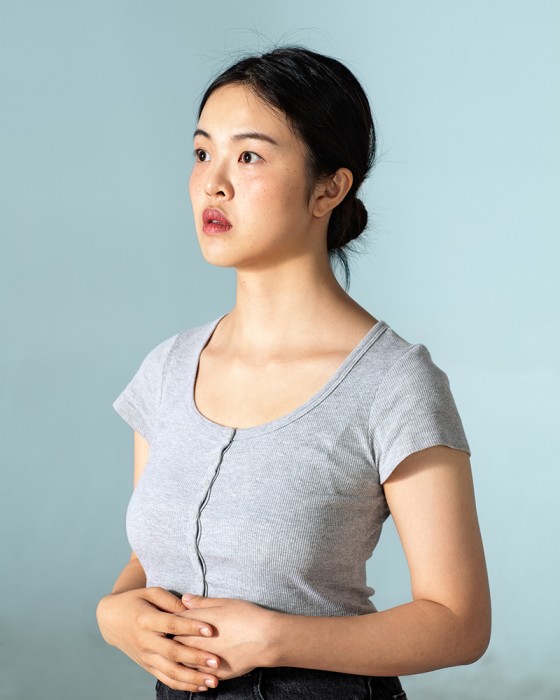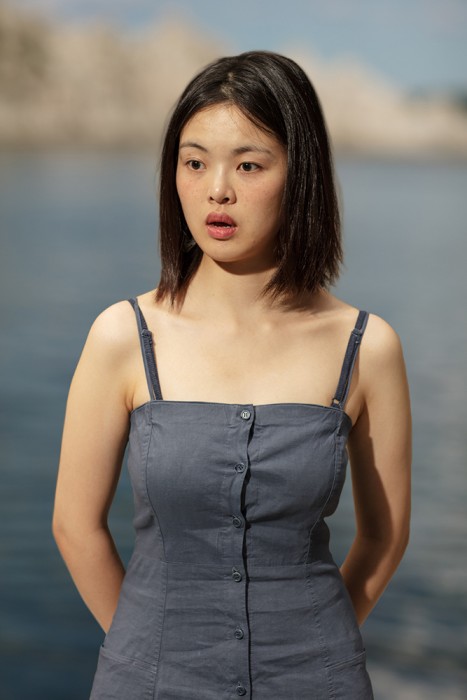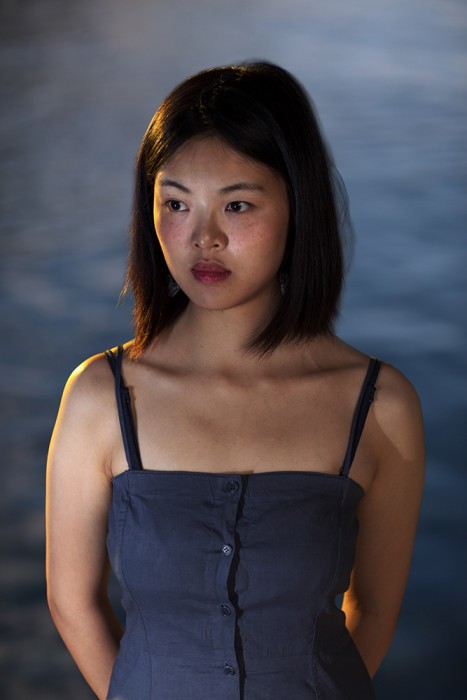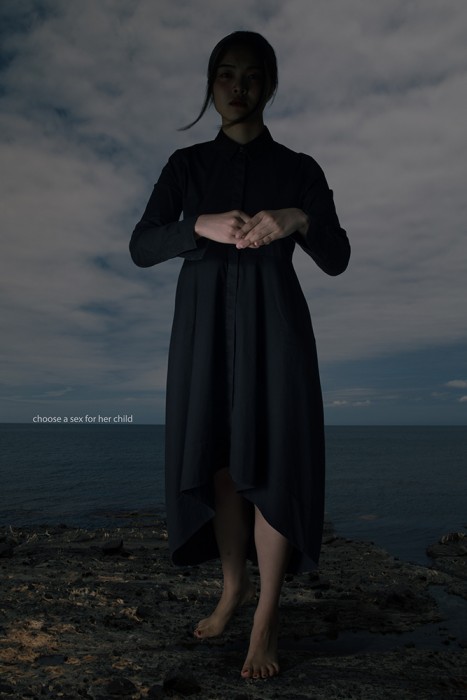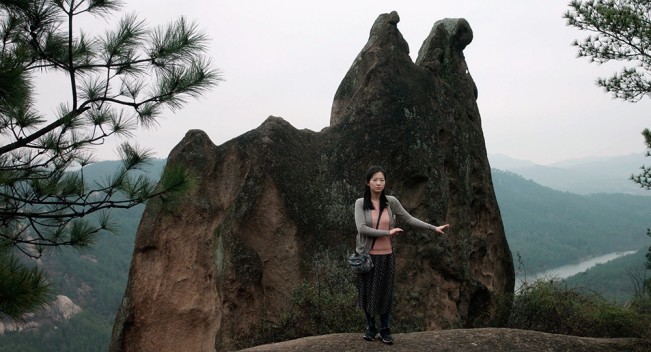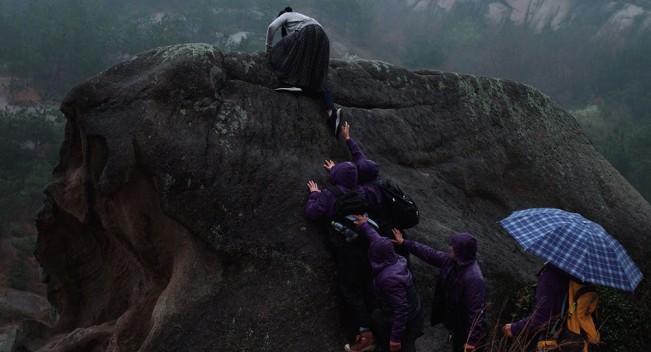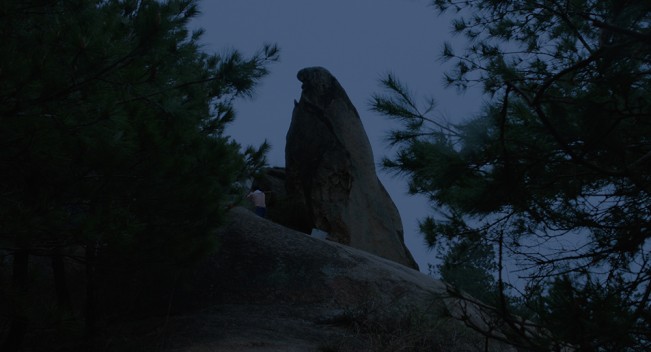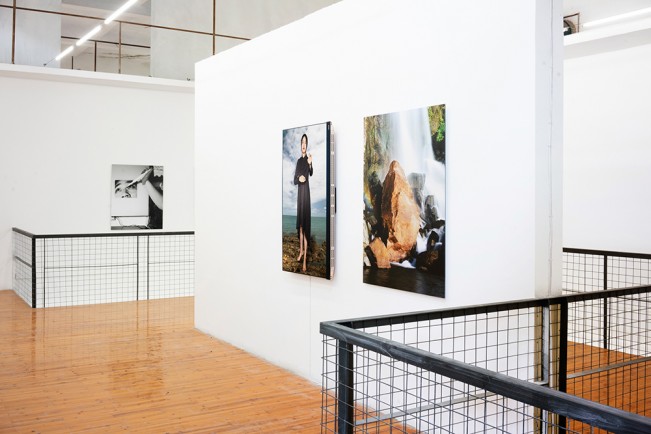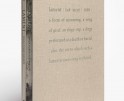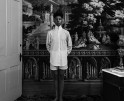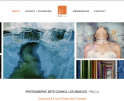Photographers on Photographers: Guanyu Xu in conversation with Kanthy Peng
Kanthy Peng and I have known each other since 2011 when we both entered the same class at Beijing Film Academy. She was one of the reasons that I ended up in the School of the Art Institue of Chicago in 2014 as a transfer student. Because she transferred there in the prior year. By then she was already making fascinating images that investigate gender, sexuality, and stereotypical photographic representation.
Today I want to introduce this new series of images that she developed in her time at the Yale School of Art. The images you see here, are not only still images, but also including game-like interactive video, as well as a short film. Her prudent depiction of subjects always filled with theatrical tension. They would raise the question for the viewers (by the line between fact and fiction): who has the power to determine the identity of her subjects.
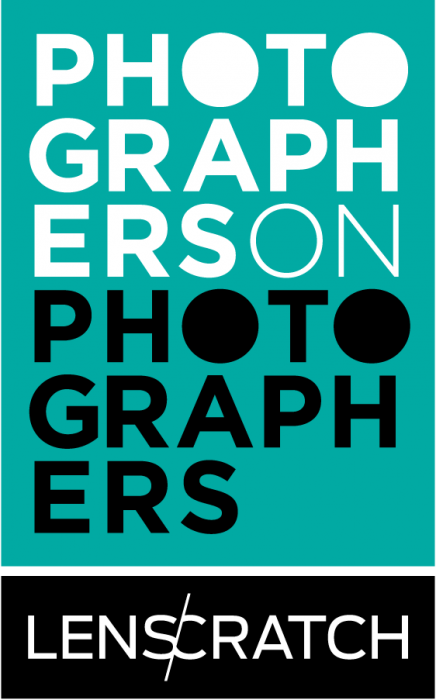
Kanthy Peng is an artist from China who works primarily with photography, video, and installation. She received her MFA degree from the Yale School of Art in 2019, and attended Skowhegan School of Painting & Sculpture in the same year. She will be an artist-in-residence in 2020-2021 at Jan van Eyck Academie. Instagram: kanthypeng
徐冠宇 Guanyu Xu (b.1993 Beijing) is an artist currently based in Chicago. He was the recipient of the Fred Endsley Memorial Fellowship (2015) and the James Weinstein Memorial Fellowship (2018). He is the winner of the Lenscratch Student Prize (2019), the Foam Talent Award (2019), Lensculture Emerging Talent Award (2019), Kodak Film Photo Award (2019), and he is a Runner-up of the Aperture Foundation Portfolio Prize (2019).
His works have been exhibited and screened internationally including the Aperture Foundation, New York; ICP Museum, New York; Athens Photo Festival, Greece; Format Photo Festival, UK; Fotomuseum Winterthur, Switzerland; Mint Museum, Charlotte; 36th Kasseler Dokfest, Germany, and others. His work can be found in public collections including The Art Institute of Chicago and the Museum of Fine Arts, Houston. His works have been featured in numerous publications including The New York Times, ArtAsiaPacific, The New Yorker, W Magazine, Aint-Bad Magazine, Harper’s Magazine, Musée Magazine, Der Greif, and China Photographic Publishing House.
Another Awaiting Stone
Another Awaiting Stone is a project made between 2017~2019 that includes a short film, video installation, and still photographs.
This work centers on the East Asian folklore story “The Awaiting Stone.” In the film, the local office representative for Tourist Administration and his secretary go on a trip to find a potential touristic site on a barren mountain- a stone that resembles a housewife’s gesture anticipating her husband’s return home. In the interactive video installation, a young woman stands in the tsunami disaster ruins, waiting for audiences to control the various photographic elements (lighting, angle, aperture, etc.) of her image, transforming her into a monumental portrait. The still photo series extends from the specific narrative, and abstractly reenacts the stereotype of placing the feminine body in the landscape.
Reflecting on the associations of women to stone, this project attempts to decode the ways in which culture, society, and images collectively construct female identity. Besides, it reflects my interest in genre expectations.
Guanyu Xu: Hi Kanthy, thank you so much for having this interview with me! Could you tell us why did you start this project? What’s the background story of the “The Awaiting Stone?”
Kanthy Peng: I engage with folklore stories as the twofold material: it’s the local culture fits in written history, which clearly projects the social norm of its time. Meanwhile, it’s also the hidden evidence that could preserve what is deleted or altered in the past. “The Awaiting Stone” I choose to use as the background story for this project is quite a famous folktale in East-Asian culture. It tells a story of a woman waiting for her husband to come home year after year, until she becomes a stone, but still waiting. The story has a lot of different adaptations, and in fact, many places in China make use of this story to advertise their local tourist sites.
GX: You connect film, a game-like interactive video, and photographs, why do you end up mixing these three media?
KP: I don’t feel it necessary to stick with one specific medium or two, and being a little more fluid between still and moving images helps me understand each of them better. Also, the film and the video in this project are actually quite photographic.
GX: Many of your images use specific gestures, quite performative, could you give us some insights? Maybe give us some examples using specific images
KP: Thanks for bringing that up. For example, “Landscape in Woman in Landscape” reenacts a romanticized narrative: Someone (usually a woman) becomes some part of a geographical landscape. The face is not expected to be seen because you need this passive “longing” moment to complete it. The gesture of waiting, and how we guide, observe, and preserve that gesture, are what I’m interested in exploring.
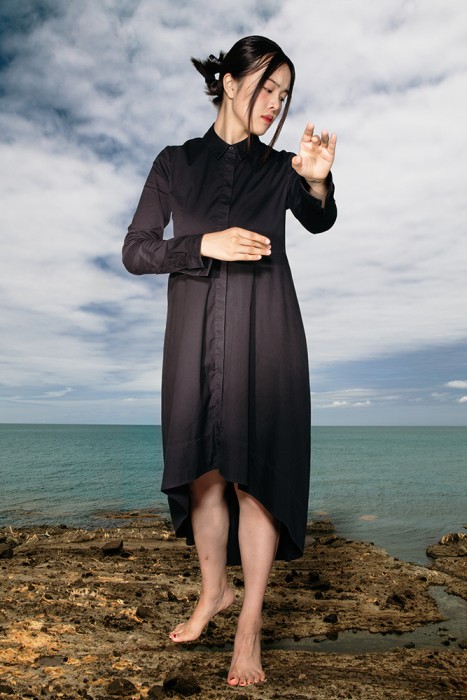
©Kanthy Peng, screenshot from Choose A Skill to Forget, 201GX: Could you elaborate on your interests in “genre expectation?” Do you consider yourself questioning or subverting certain expectations?
GX: Could you elaborate on your interests in “genre expectation?” Do you consider yourself questioning or subverting certain expectations?
KP: Similar to the notion of “genre memory” in literature, the constitution of style influences people’s perception of the image. In “Choose A Skill to Forget”, I ask the audience to manipulate different visual elements of a typical deadpan portrait. Through this uncanny experience, I aim to unfold the power dynamic in the history of representation.
GX:What are you working on now? What’s next for you?
KP: I will be an artist-in-residence in Jan van Eyck Academie from this September, where I will work on a new project about another Chinese folklore called Meng Jiangnu’s Bitter Weeping. Meng wept for her husband, who died from slavery so hard that her tears break down the Great Wall of China. While tears are often portrayed as the metaphor of feminine character, this story instead endows them with transformative power that revenges on hegemonism. In the new project, I will create a contemporary version of this story. Hopefully, I can continue to use some of the languages I have developed from “Another Awaiting Stone”.
Posts on Lenscratch may not be reproduced without the permission of the Lenscratch staff and the photographer.
Recommended
-
Photographers on Photographers: Congyu Liu in Conversation with Vân-Nhi NguyễnDecember 8th, 2025
-
Linda Foard Roberts: LamentNovember 25th, 2025
-
Arnold Newman Prize: C. Rose Smith: Scenes of Self: Redressing PatriarchyNovember 24th, 2025
-
Spotlight on the Photographic Arts Council Los AngelesNovember 23rd, 2025
-
The Aline Smithson Next Generation Award: Emilene OrozcoNovember 21st, 2025

